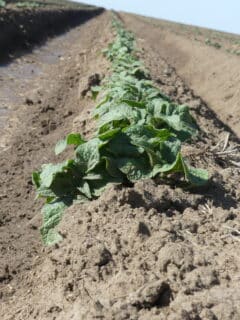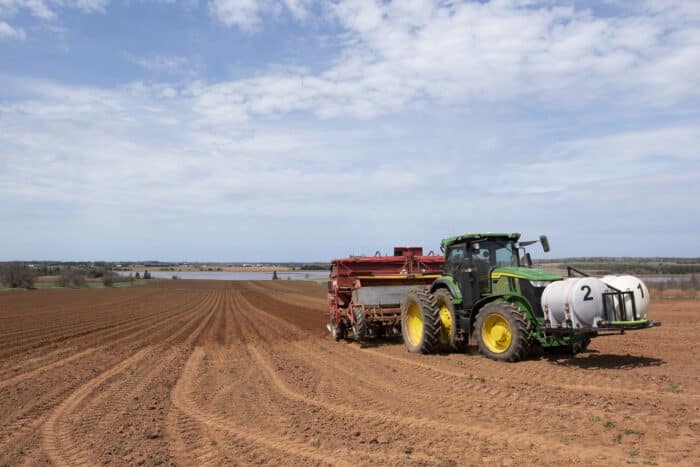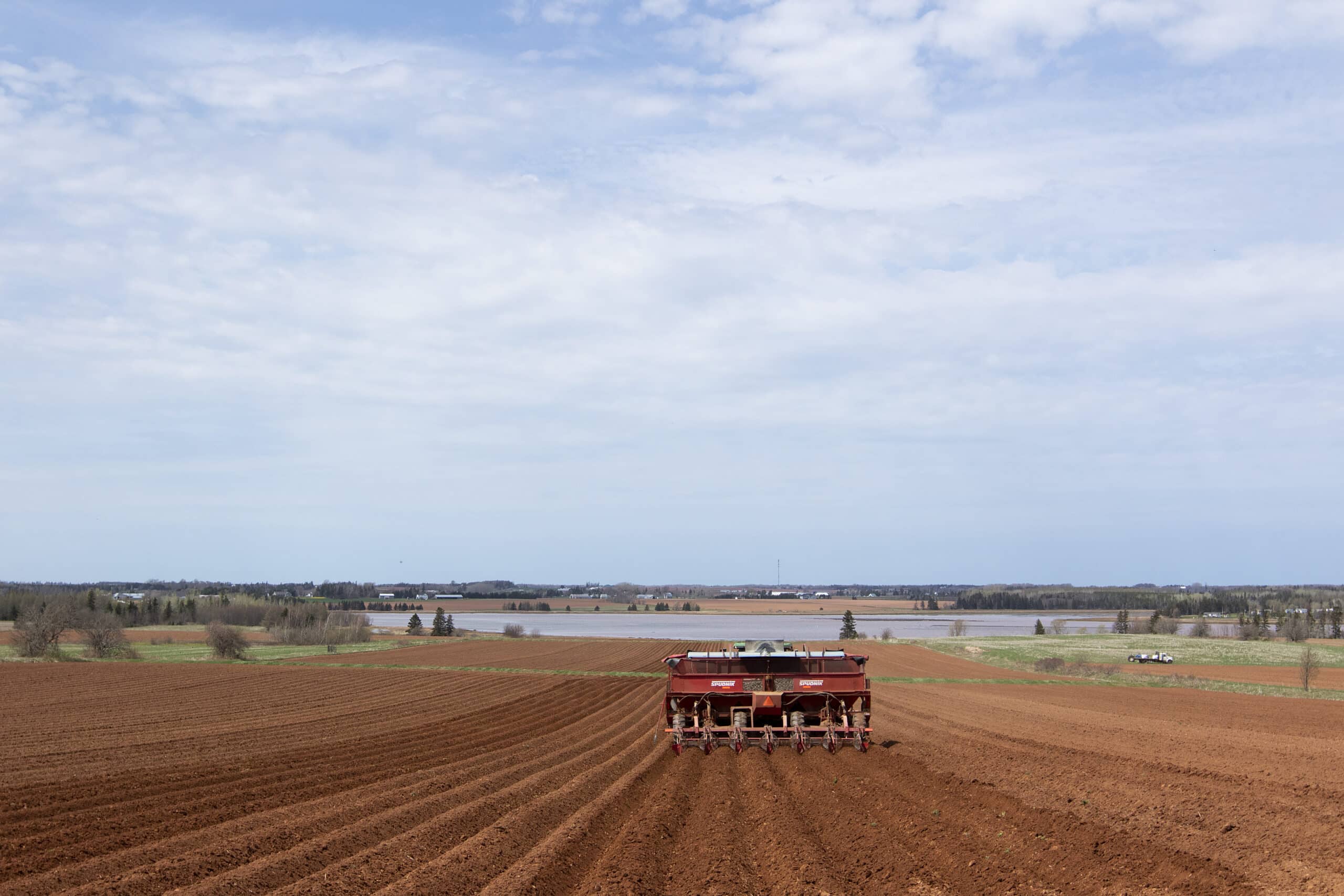A relatively smooth, fast potato planting season in Canada is being followed by hot, dry weather, leaving spuds withering out in fields.
After a delayed, wet, and cold #plant22 for some in Canada, the warm and dry conditions of spring 2023 were a welcome reprieve. Growers were able to get their crop in fast with relatively few headaches.
“Things went well, conditions were pretty good across the country to get in (potatoes). And it went in, in fact, quickly actually, especially compared to last year…but then it got hot and dry,” Victoria Stamper, general manager of the United Potato Growers of Canada, explains in a phone interview. She adds while those in the west are still facing hot dry conditions, those further east from Ontario through to Prince Edward Island have received a good amount of rain over the past few weeks as of June 20, 2023.
As the story usually goes, conditions did vary across Canada during planting. In Alberta, growers were held back from getting into the fields due to cold, wet weather. However, the script quickly flipped with growers now praying for rain.
“We had some decent rains last spring, but it hasn’t rained since then — it’s just that simple. We didn’t have a lot of snowmelt runoff, so we had limited springtime snowmelt runoff and our irrigation reservoirs rely on runoff to recharge,” Terence Hochstein, executive director of the Potato Growers of Alberta, explains in a phone interview. “We’ve had thunder showers go through the province, but we have not had a normal soaking rain.”

The hot, dry weather has allowed for potato growth to catch up following its late start, but Hochstein says the plants need rain or else a “wreck could happen”. In the southern portion of the province, some irrigation districts are already on allocation, while in the north, non-irrigated seed fields need rain before their crop progress starts going backwards — a three-inch accumulation of rain did fall in the region during the week of June 18 helping seed fields out.
“Nobody’s talking extraordinary crop right now, we’re the fifteenth of June, you can get a hailstorm, you can get all kinds of things. Right now, we’re sitting in an OK spot, but there’s a whole lot of the season yet to come in front of us,” Hochstein adds.
In Manitoba, potato fields are being scorched with temperatures 125 per cent hotter this spring and only 25 to 40 per cent of normal rain amounts having fallen, Manitoba Agriculture’s Vikram Bisht wrote in a June 15 crop report.
“Scorching of emerged sprouts is still being reported in some fields, especially those which had not been irrigated yet. There have been spotty and scattered showers mostly in western parts of Manitoba in the last week,” Bisht noted.
Potato planting wrapped up in Manitoba on June 8 — 10 days ahead of last year. Planting went fast across the province due to a dry spring allowing for easy field access, Bisht said in a crop report.
In Ontario, spring planting went smoothly with good conditions. There was sufficient moisture at the beginning of spring, but not too much, allowing growers to get their spuds in the ground fast.
“By then we were ready for some rain, and we didn’t get it. We’ve been extremely dry since the end of planting. It’s put stress on the potatoes, on the plants in the ground for sure,” Kevin Brubacher, general manager of the Ontario Potato Board, says in a phone interview on June 13, 2023. “Thankfully, we just got, I’d say, an inch to two inches for most growing areas over the weekend. So that’s going to help, but we need more consistent rain for the next month.”
In the Maritimes, the spring planting story has followed a similar storyline. Greg Donald, general manager of the P.E.I. Potato Board, says planting conditions have been excellent with growers ahead of where they normally are for the year as of June 13 — P.E.I. is usually the last region in Canada to finish potato planting. April and May were some of the driest on record, which helped growers get into the field planting faster.
“Potatoes don’t need a whole lot of moisture until they get emerged and established, till they come through the ground and then they have foliage. And so, a lot of our crop has yet to emerge even yet,” Donald explains in a phone interview.
While the spuds don’t need much water yet, temperatures on the Island have been creeping to the high 20 C range, which could cause issues for the freshly emerged plants.
“The tank was empty, like the soil moisture profile. Literally, we had several days of overcast and rain last week, so it filled it right back up. And we’re sitting in pretty good right now,” he says. Adding once the plants are emerged and established, they’ll need 25 millimetres of water a week, all season long.

For the most part, growers across the country are optimistic about the growing season, and with months still to go the resounding consensus is that anything can happen.
Growers are “just basically saying right now the plants are doing well — everything’s up,” Stamper says. Adding to that, Dale Lathim said during the Crop Transition Conference in Bloomington, Minn. on June 16, “‘We don’t sell plants, we sell what’s underneath.’ So, we have still a ways to go to get that.”
Looking towards acreage, Stamper says nationally the industry is expecting areas to remain relatively flat with a few regions adding production, while others reduce.
“You expect after a year of really good pricing, and the demand continues, that we would expand, but there’s still a lot of barriers for people,” she explains. “There are water issues in certain places — Manitoba is very tight for water. And the costs of borrowing are still high, land costs, availability of land to expand.”
In Alberta, acreage is expected to be higher as processing growers have been contracted to fill contract shortages in other regions where fry plants are located, Hochstein says. Ontario on the other hand, expects acreage to be on par with their usual average at around the 37,000 acres mark, Brubacher says.
Potato acreage in P.E.I. is expected to be status quo with changes only seen in what varieties are grown. Donald says in the fresh market they’ve been seeing a shift from red to yellow potatoes while on the processing side Russet Burbank acres have been falling as growers have started to plant more sustainable varieties which require less fertilizer and other crop inputs.
Header photo — Potatoes are planted in a field at G Visser and Sons in Orwell, P.E.I. Photo: Lucas MacCormack
Related Articles
Climate Change and Heat Stressed Spuds









